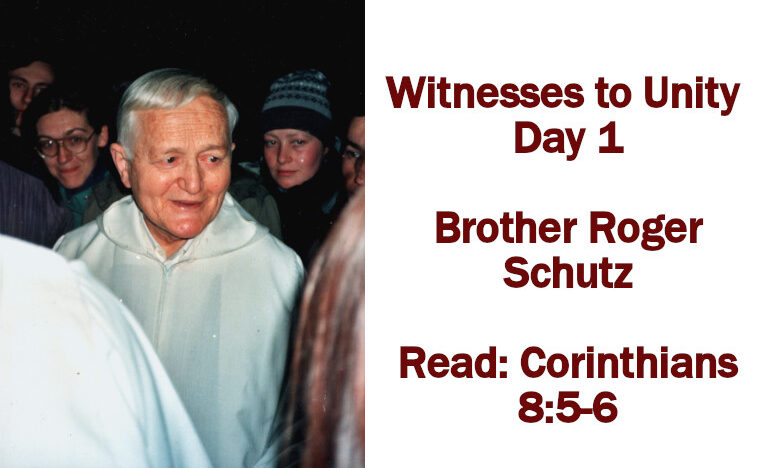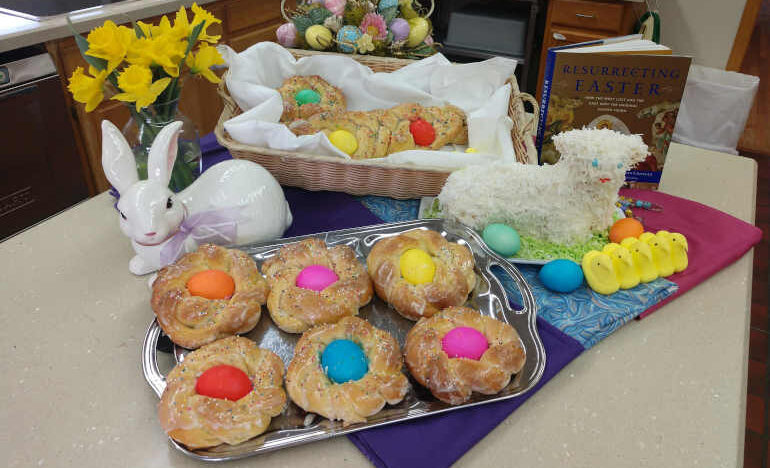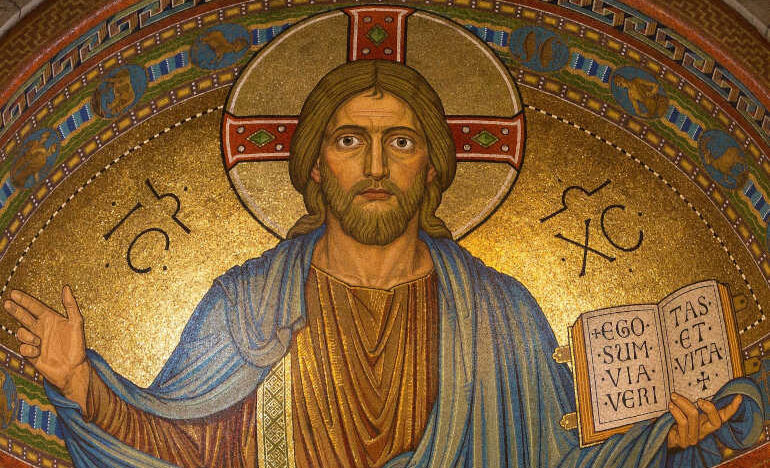Witnesses to Unity. Day 1: Brother Roger Schutz

An Octave of Prayers for the Week of Prayer for Christian Unity
Welcome to Day One of a Week of Prayer for Christian Unity, brought to you by three Catholic spirituality centers. We invite you to pray with us as we post short prayers and reflections based the witness of eight ecumenical leaders, for each of the eight days.
The spirituality centers are the Marillac Center in Leavenworth, Kansas, the Sophia Center in Atchison, Kansas and Precious Blood Renewal Center in Liberty, Missouri.
We encourage you to share these prayers with members of your family and circle of acquaintances, including those who belong to another faith tradition.
Together, let us pray. (pause)
A reading from Paul’s First Letter to the Corinthians 8:5-6.
“Indeed, even though there are so-called gods in heaven and on earth, yet for us there is one God, the Father, from whom all things are and for whom we exist, and one Lord, Jesus Christ, through whom all things are and through whom we exist.”
Brother Roger Schutz
Reflecting on what Paul says about there being one God for all of us, implies that we are all sons and daughters of the same God, and therefore we are all brothers and sisters to one another; regardless of which church to which we go. But to be honest, we often set up artificial borders between groups, which don’t exist in God’s mind.
Each day this week we will highlight a leader in the ecumenical movement, from whom we can learn and apply actions in our own lives. One of the early leaders of the Ecumenical Movement was Brother Roger Schutz, the son of a Protestant pastor and the founder of an ecumenical community in the tiny village of Taizé, France.
Roger Schutz was born on May 12, 1915, in the village of Provence, Switzerland. His early life was solitary but happy despite several years of illness with tuberculosis.
He read extensively and studied the examples of those around him:
- his father, a Swiss Protestant pastor, who liked to pray in Catholic churches and who was profoundly attentive to the needs of his poor parishioners;
- his artistic and generous-spirited mother;
- his musical aunt;
- and his maternal grandmother, who remained in northern France during the First World War and took in refugees from the battle zone even when two bombs hit her house.
When finally persuaded to leave, his grandmother moved to southwest France, where — while remaining faithful to her Protestant origins — she attended Catholic Mass. Young Roger somehow understood that by going to the Catholic church, she was bringing about a kind of reconciliation within herself.
When World War II broke out, he asked himself why such conflict should exist between people in general and between Christians in particular. He felt himself impelled to build a community in which reconciliation and peace would be lived out daily.
In 1940, in search of a way to realize his vision, Roger cycled from Switzerland into France. He settled in the tiny village of Taizé, just a few miles from the demarcation line that separated free France from occupied France.
He and the first brothers to join him — all of them Protestants — asked to pray in the local Catholic church, which was no longer in use. Permission was granted.
Without humiliating anyone, without becoming a symbol of denial for anyone, he believed that it is possible to embrace within oneself the attention to the word of God so profoundly lived in the Reform tradition, the treasures of the spirituality of the Orthodox tradition, and all the charisms of communion of all the Catholic Church, all the while daily putting one’s trust in the mystery of faith.
The desire to be close to the poor in gospel simplicity led to Roger’s taking in Jewish refugees. After the war, the Taizé Community welcomed German prisoners of war and then a multitude of others with different needs.
The Community of Taizé bloomed, and the community grew far beyond its founder’s expectations. At a time when Brother Roger was asking where the Taizé movement’s place might be in relation to the universal church, Pope John XXIII reminded him that “the church is ever-widening concentric circles.”
Since then, people of different denominations and nationalities have flocked by tens of thousands to Taizé. Thousands also attend the Taizé meetings held annually in European cities and on other continents as a part of a “Pilgrimage of Trust on Earth.” Young people are attracted by Taizé’s form of worship, in which all Christians can join in anticipation of the deeper unity and communion for which Jesus prayed.
Taizé’s visitors camp out on the often-muddy hillside, eat simple food, and attend the community’s “common prayer” three times a day. This worship features distinctive Taizé songs, used in churches throughout the world, made up of repeated sentences sung in various languages and set to easily accessible music. The songs lead spontaneously to prayer and to that silence in which God may speak.
Leading this prayer, and available to listen and share rather than instruct, are some hundred brothers — Catholics and Protestants — from more than 25 countries. Members of the Orthodox Church also live with them on a semi-permanent basis.
Take a minute of silence now, and reflect:
- What hinders you from recognizing each person as a child of God?
- How does acknowledging God as the Father of all affect your perception of and relationship with others?
Then pray:
Father of compassion, renew our faith in you and bind us together through your love, so that we can recognize each other as your children and come together as one.
We praise you through Jesus Christ, your only begotten Son, in the communion of the Holy Spirit. AMEN.
Thank you for praying with us today. Please join us again tomorrow.
All of the prayers in this series can be found here: Witnesses to Unity: Prayers for Christian Unity.
Never miss an article published on the Renewal Center website: Sign up to receive our newsletters.
Photo Credit: Michael König CC BY-SA 3.0, via Wikimedia Commons
Watch our introductory video
Learn more about these Catholic Spirituality Centers:
The Marillac Center, the retreat and spirituality center of the Sisters of Charity of Leavenworth, in Leavenworth, Kansas.
The Sophia Center is a ministry of the Benedictine Sisters of Mount St. Scholastica in Atchison, Kansas.
Precious Blood Renewal Center, in Liberty, Missouri, is a ministry of the United States Province of the Missionaries of the Precious Blood, a Catholic religious order.
We’d Like to Hear from You!
We’d like to know what you think about this article. Send us a comment using the form below. Do you have a suggestion? Is there something you want to learn more about? Send us a note.
Related

Easter Bread (Pane di Pasqua)
By Lucia Ferrara
Easter bread is a fun bread. It’s a fun bread to make with your children, with your family, with neighbors and friends. The tradition of Easter bread dates back centuries and comes from many parts of the world.

Easter Sunday, the Resurrection of the Lord
Today’s scriptures tell us how three days changed the world. How have they changed you?
Categories
Assembling God's Puzzle Coffee with Padre Cooking & Spirituality Encounters of the 4th Kind Family Matters Reflections on the Eucharsitic Prayers Spiritual Resources Taize Prayers The Contemplative Life Traveling with Pilgrims of Hope Uncategorized Videos Week of Prayer for Uhristian Unity When you need a little help
